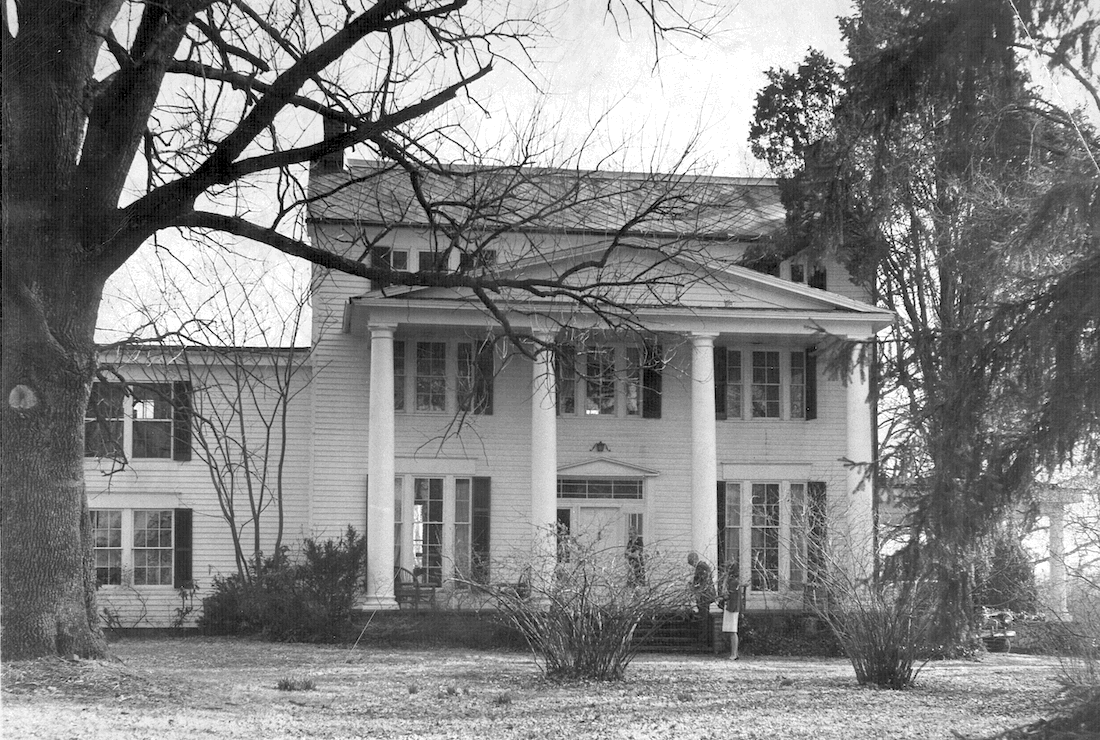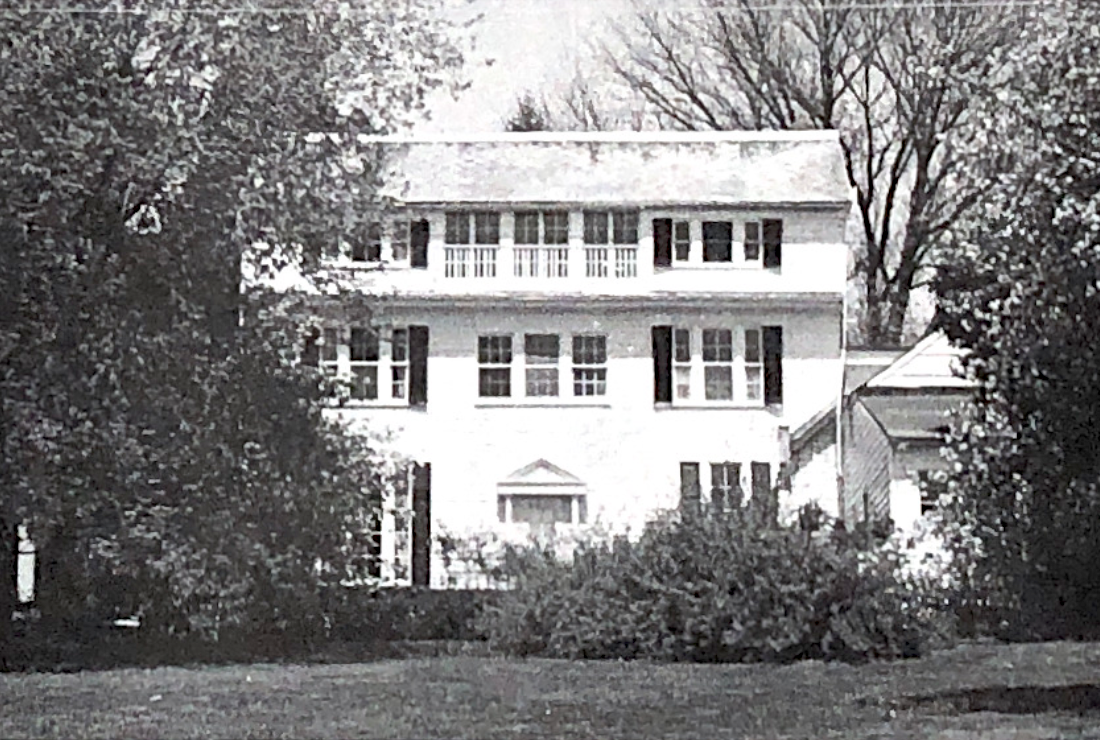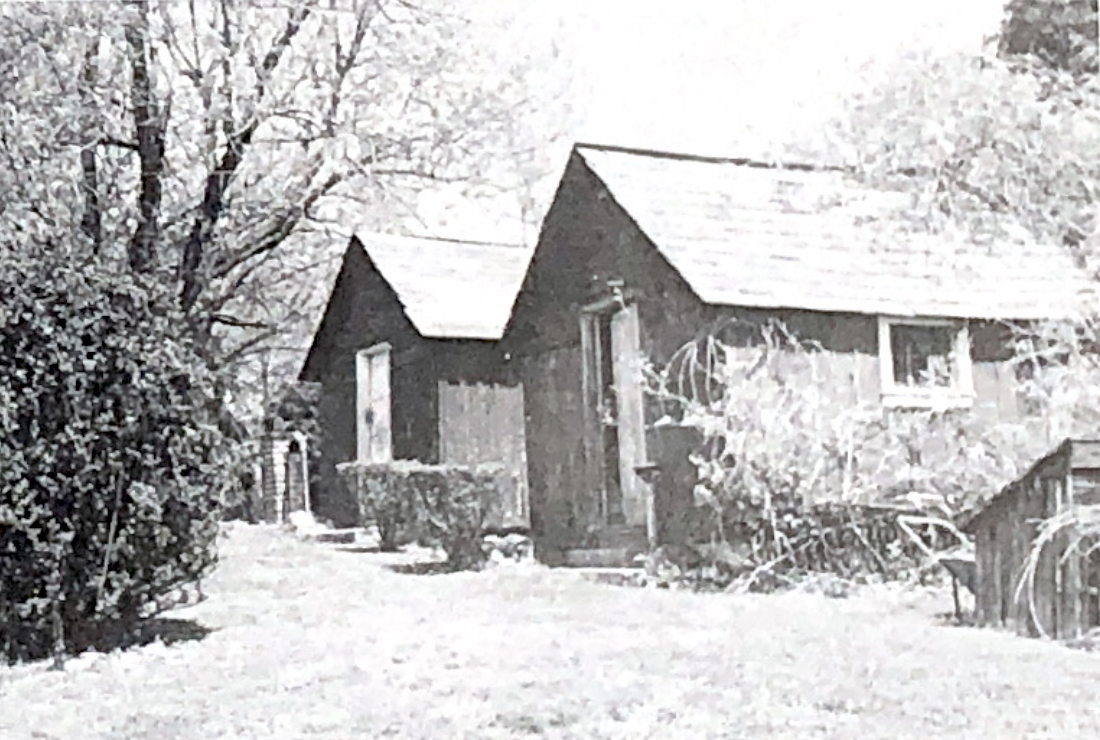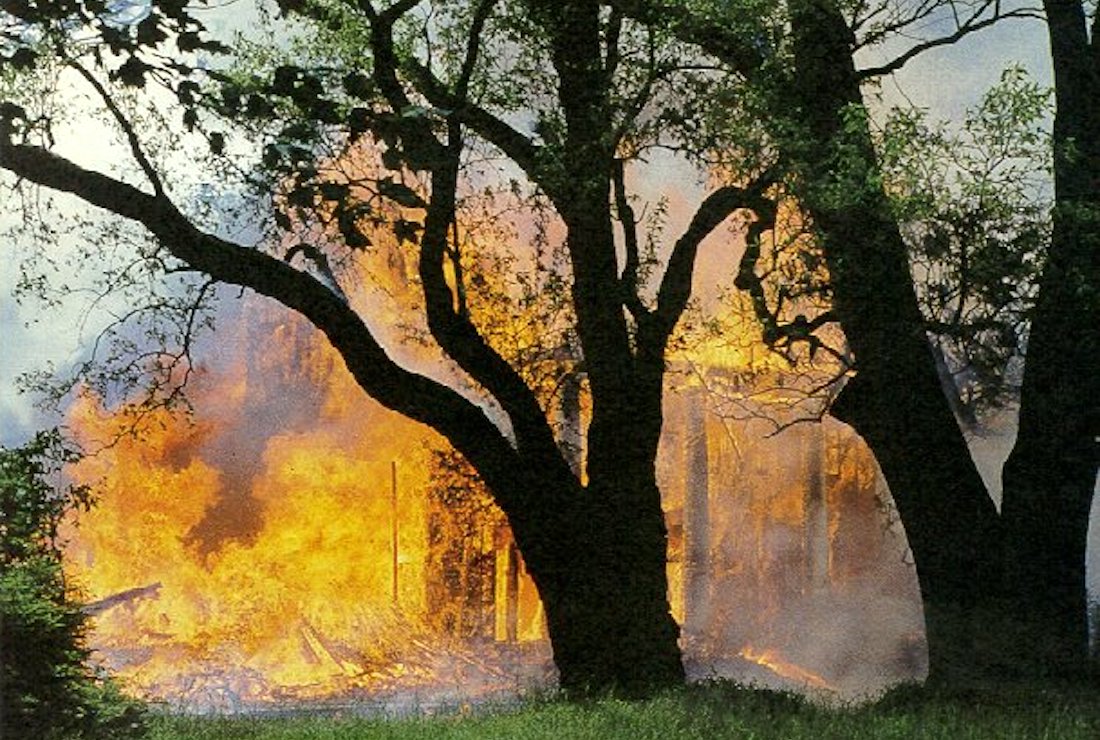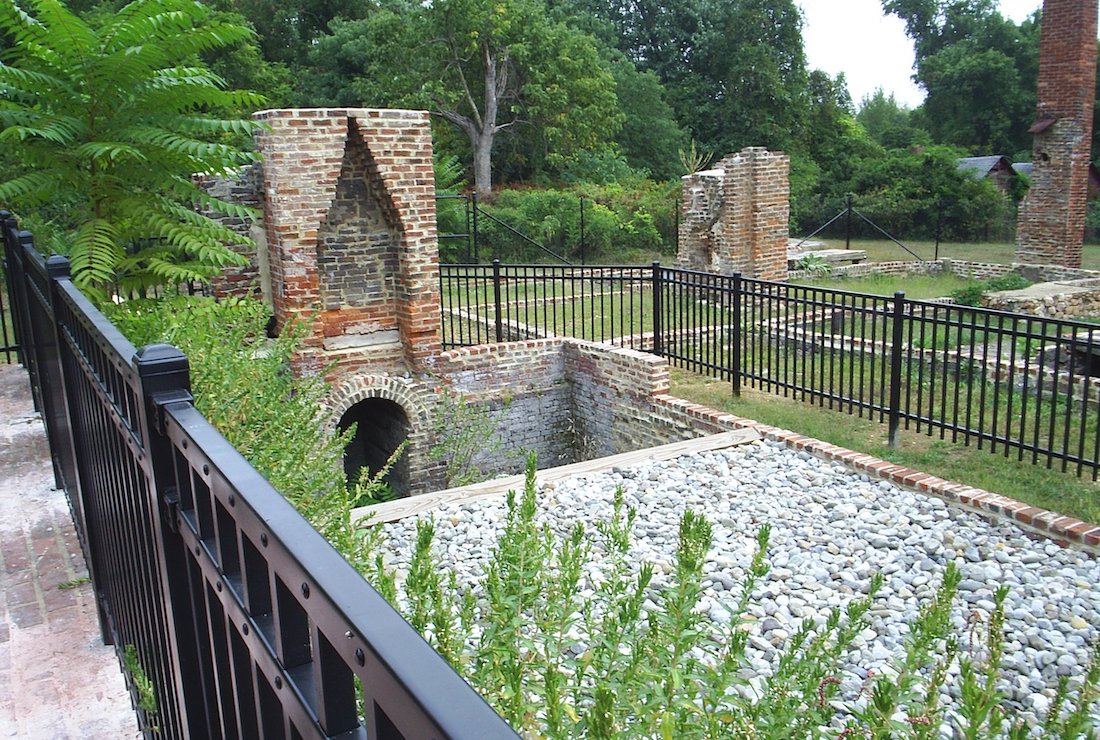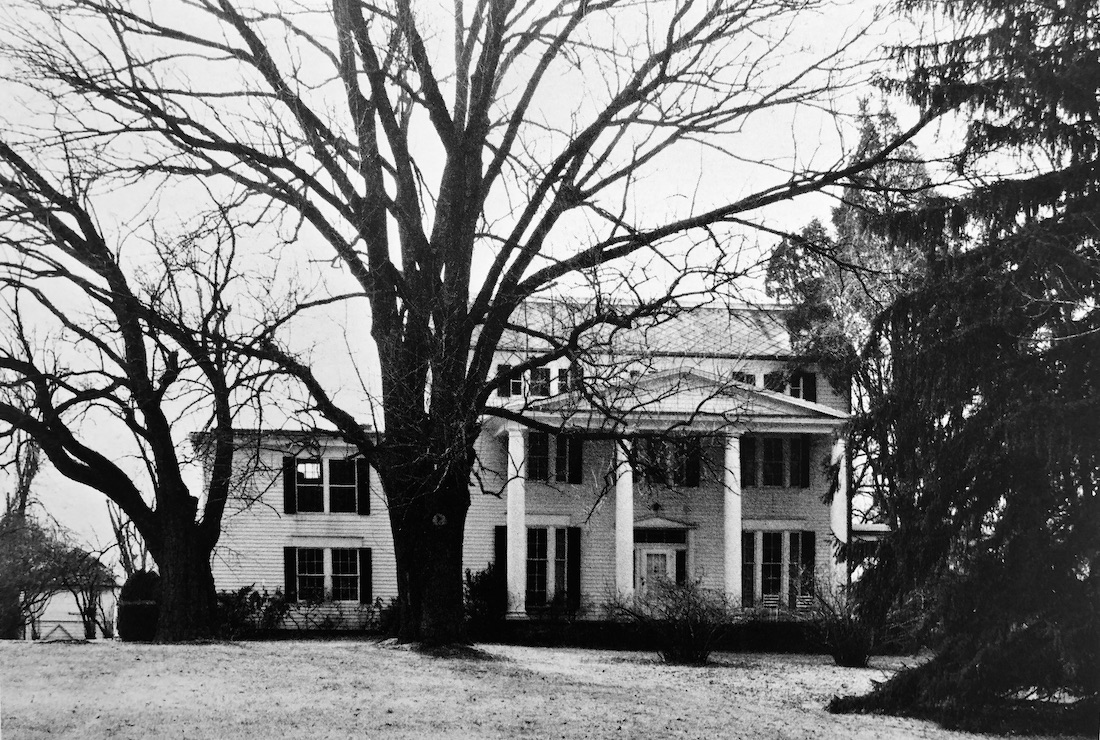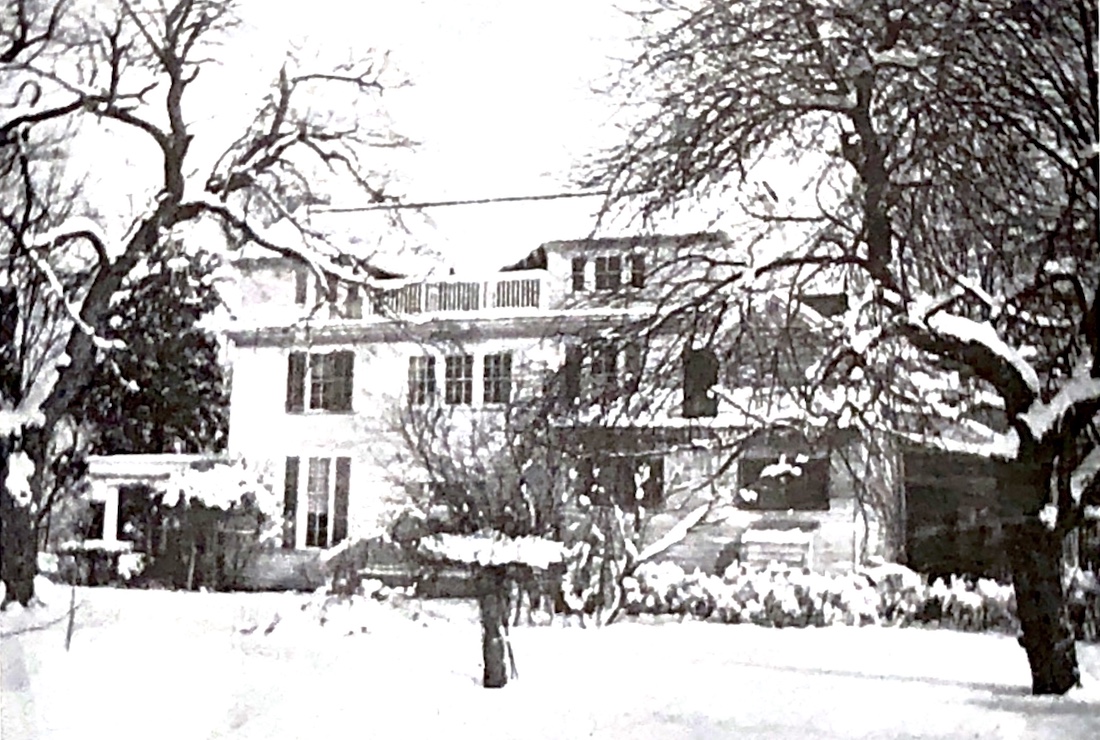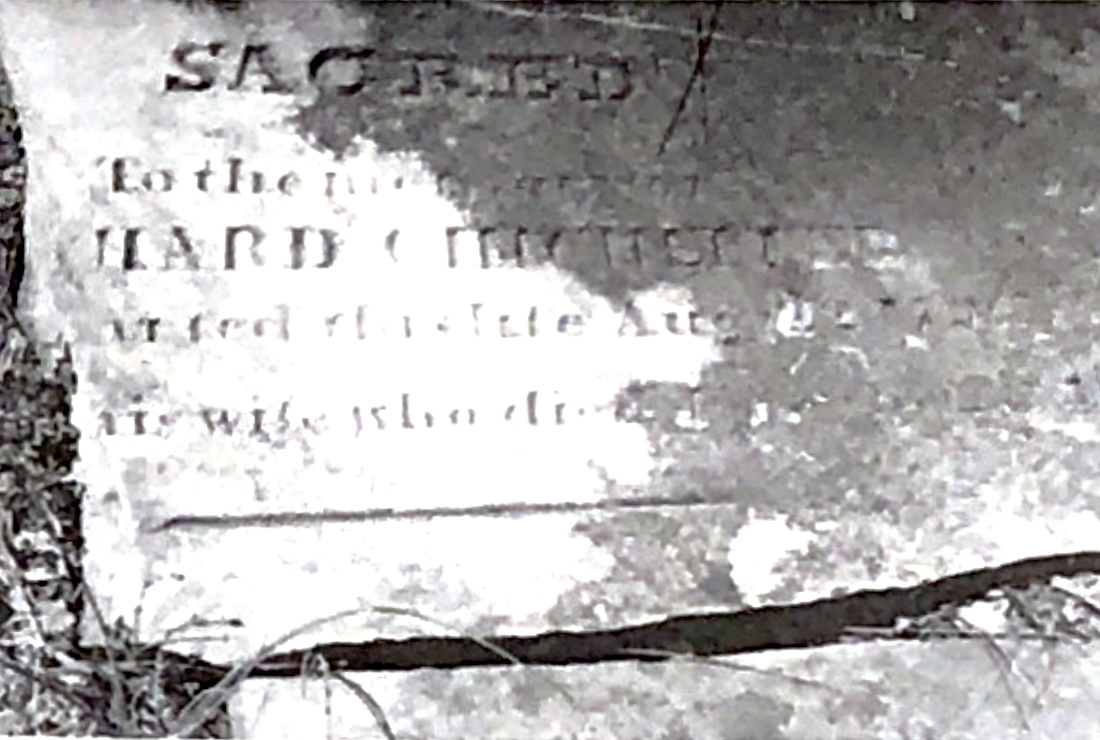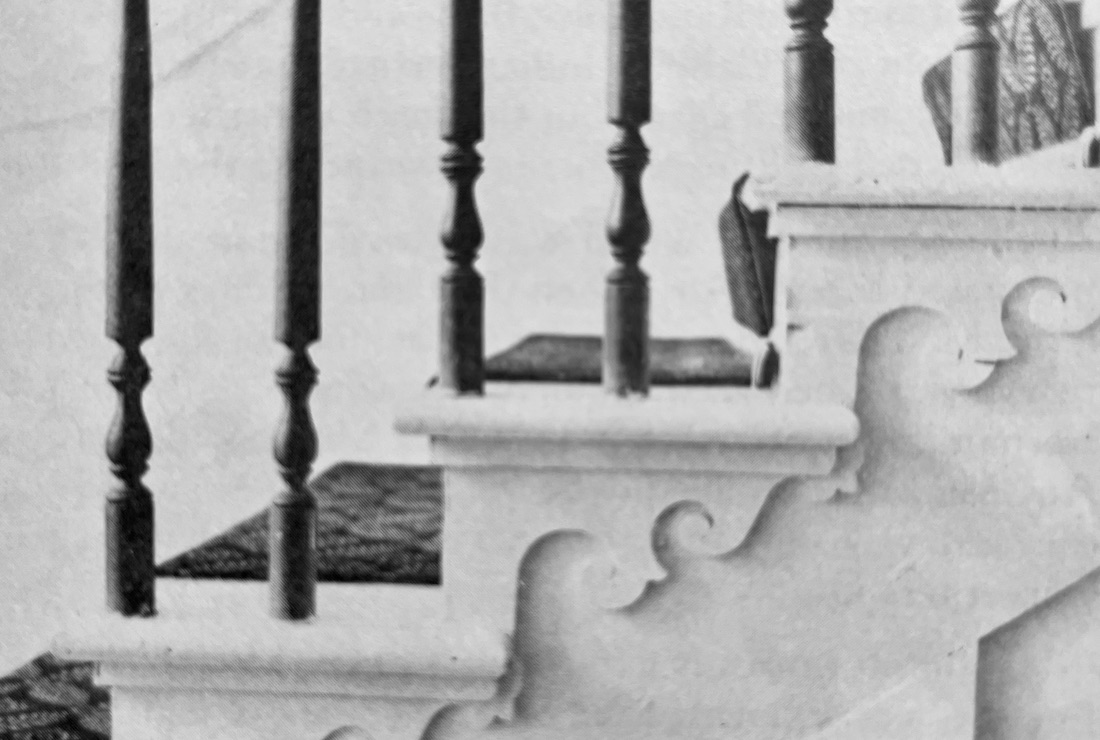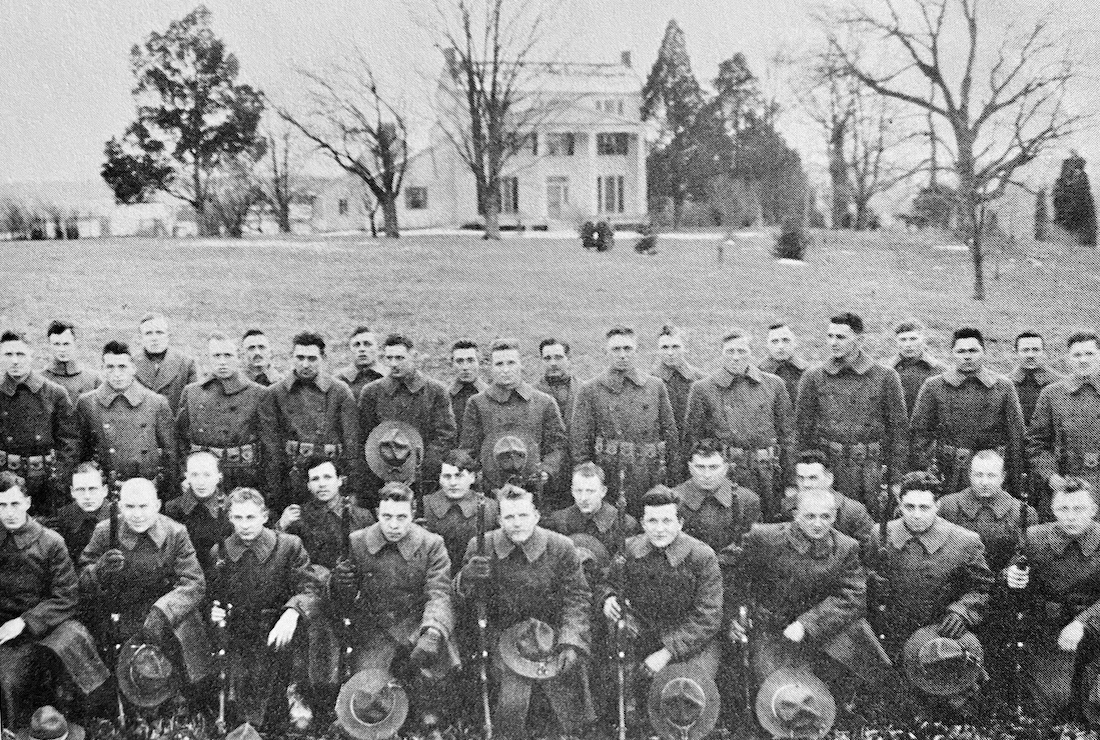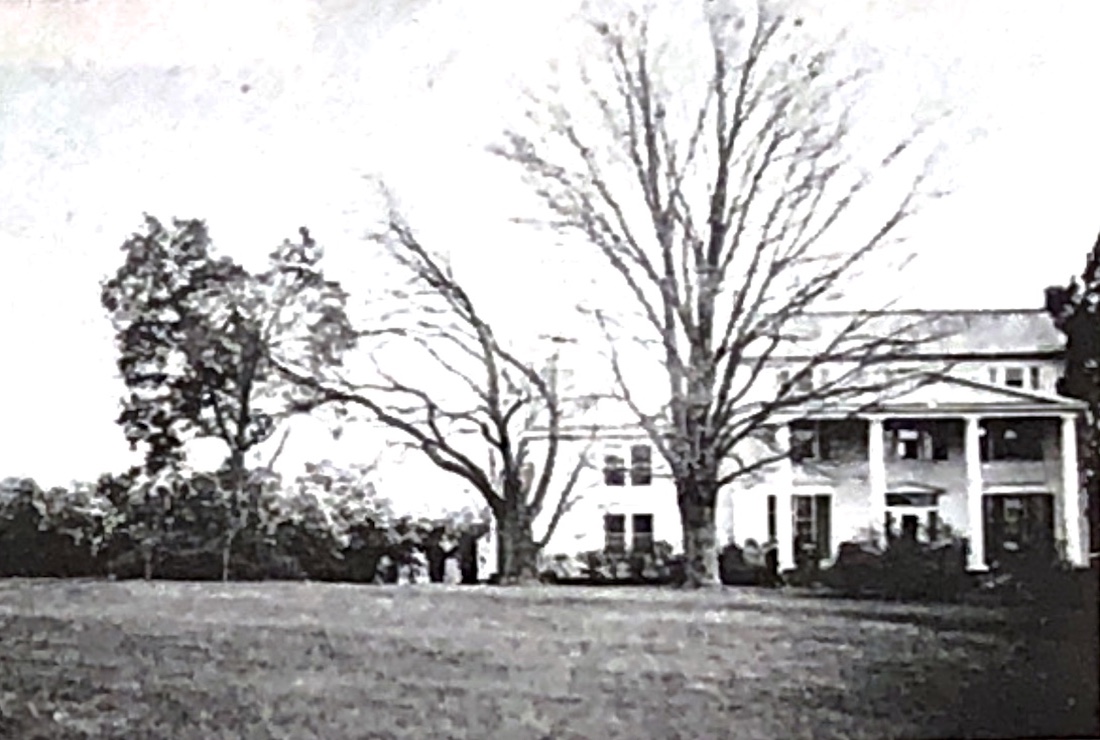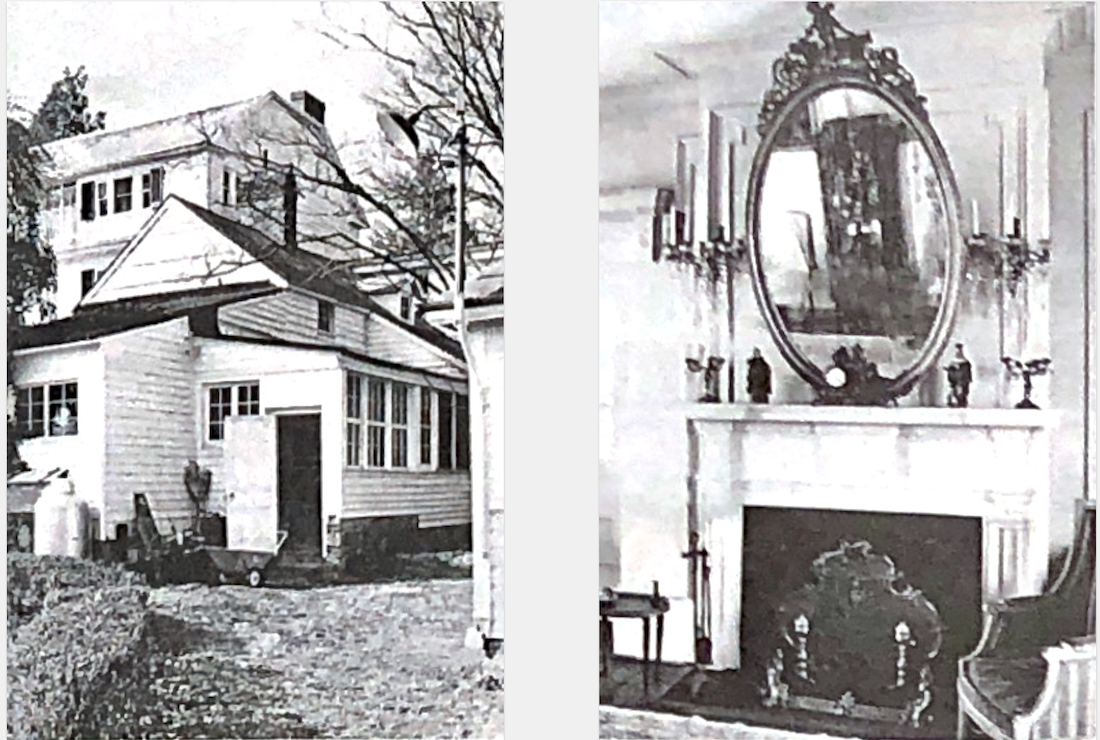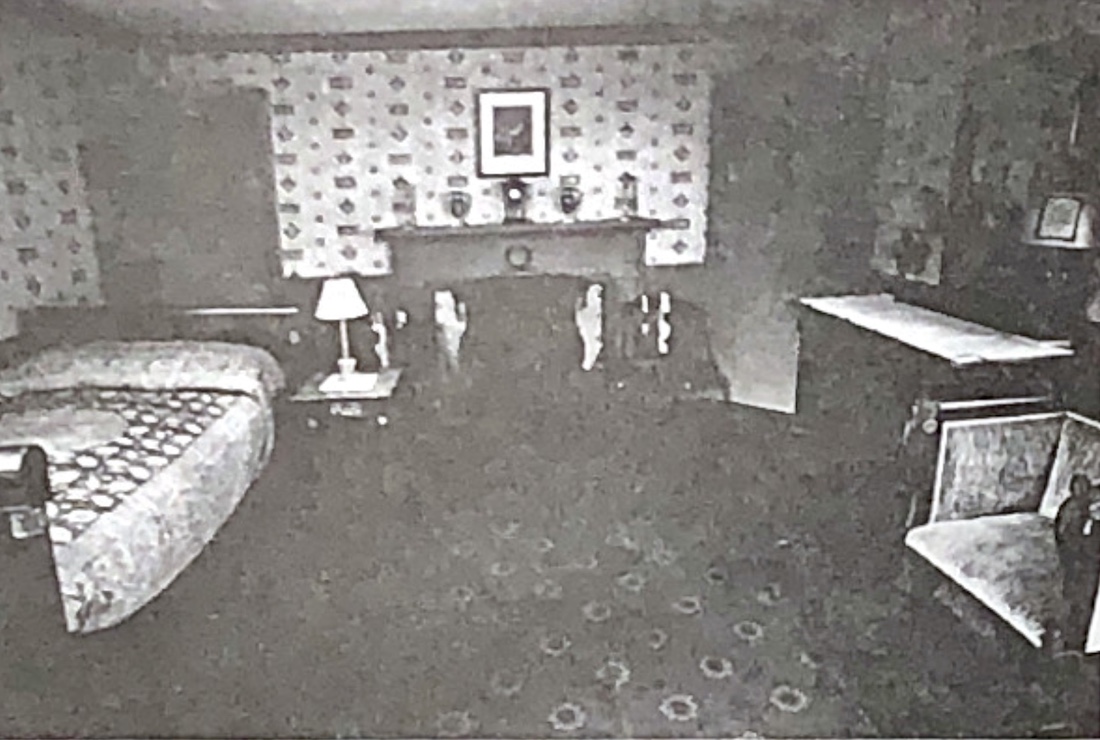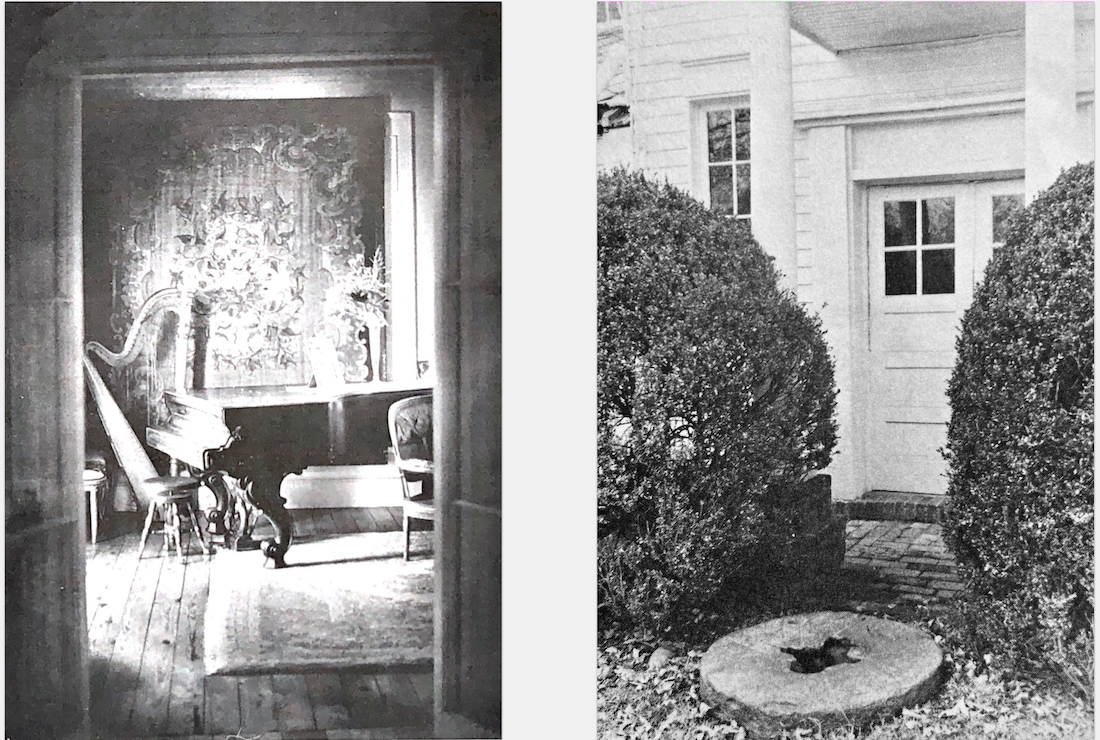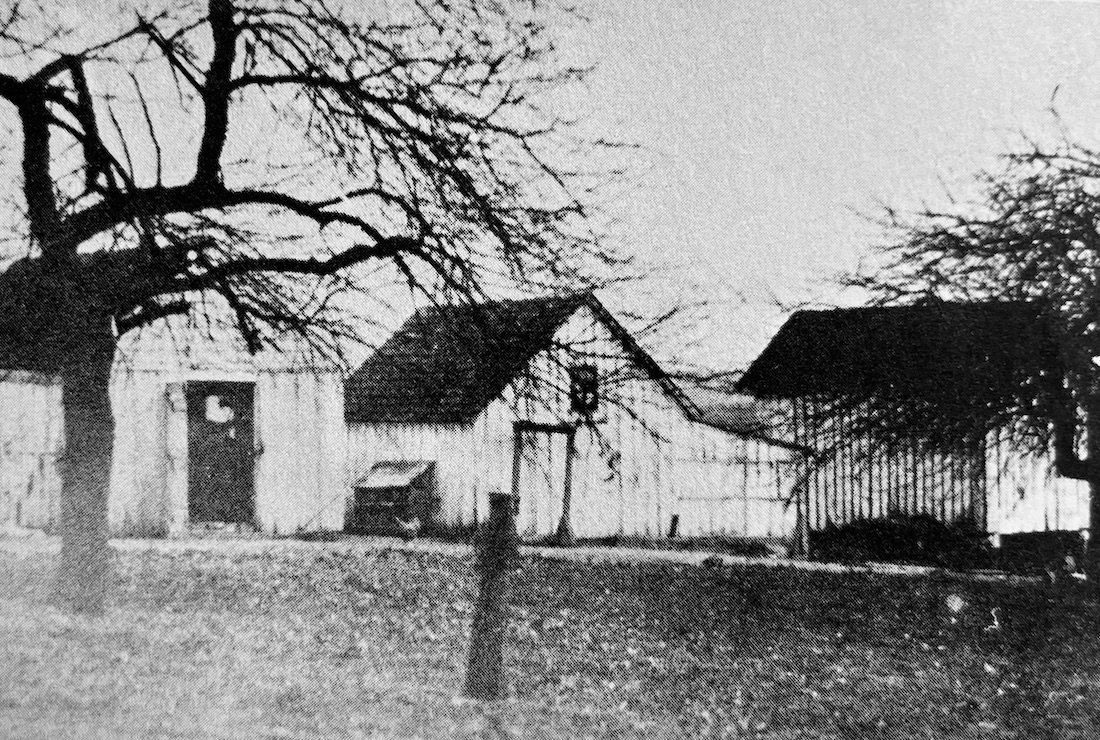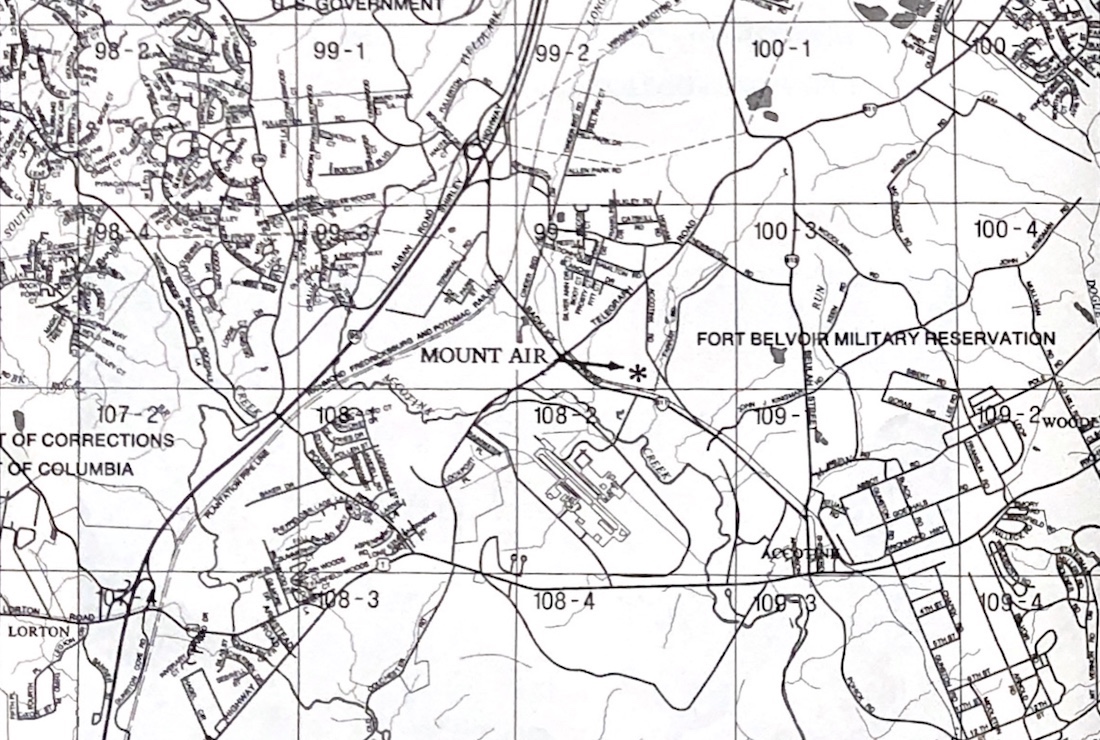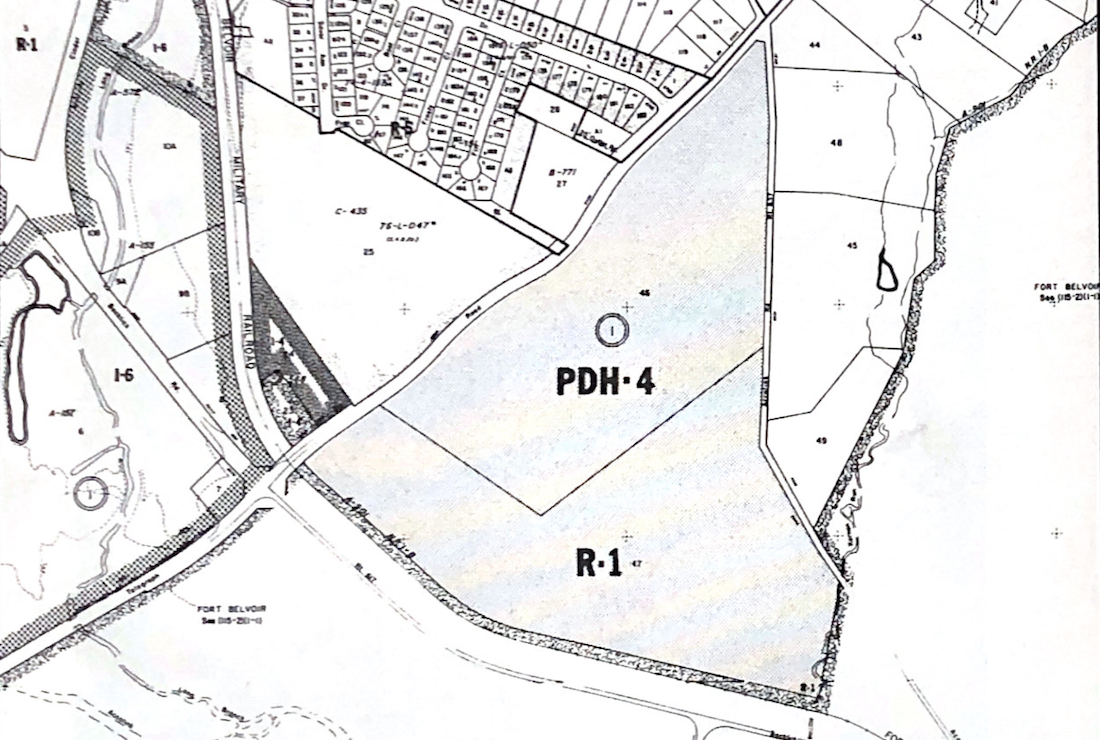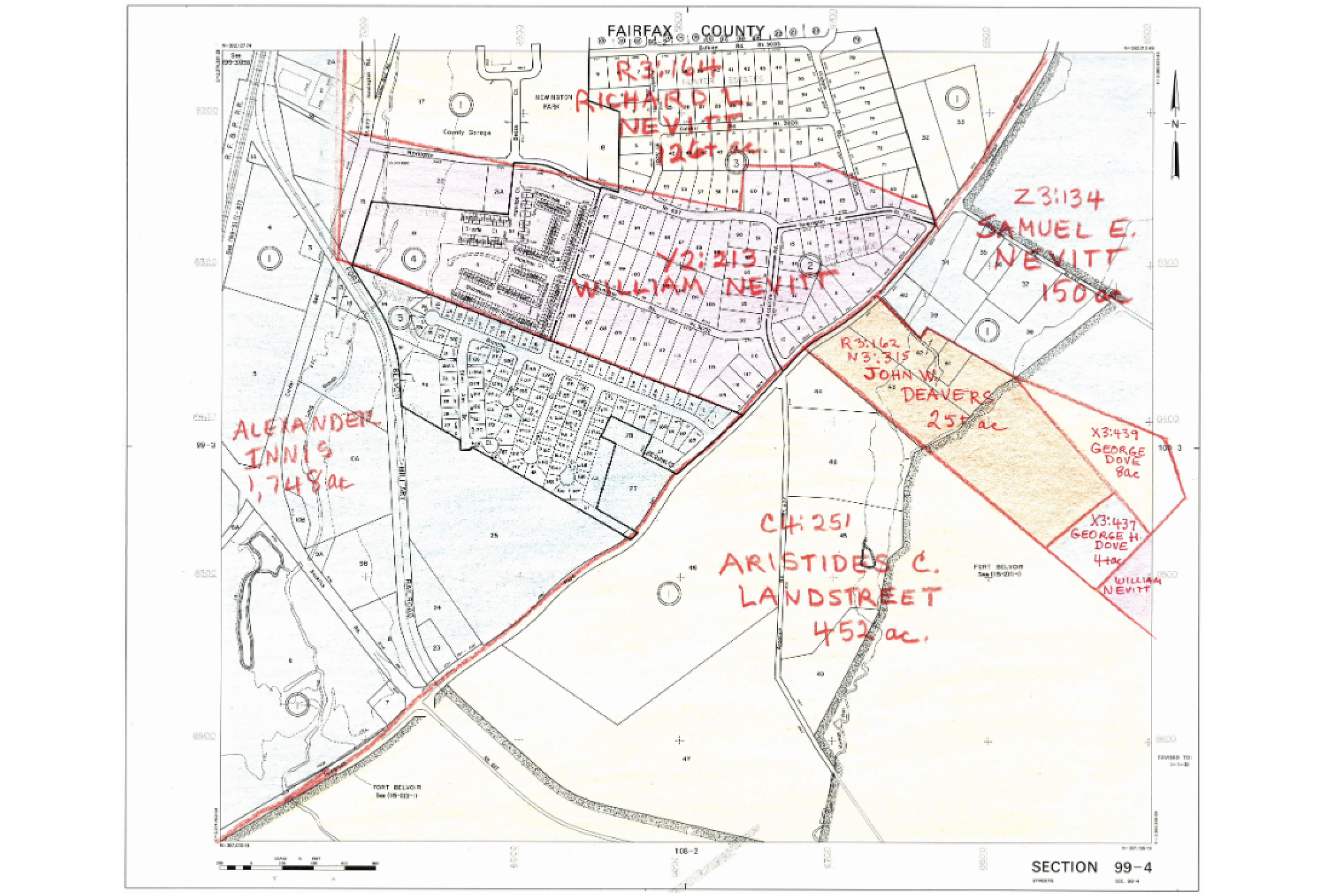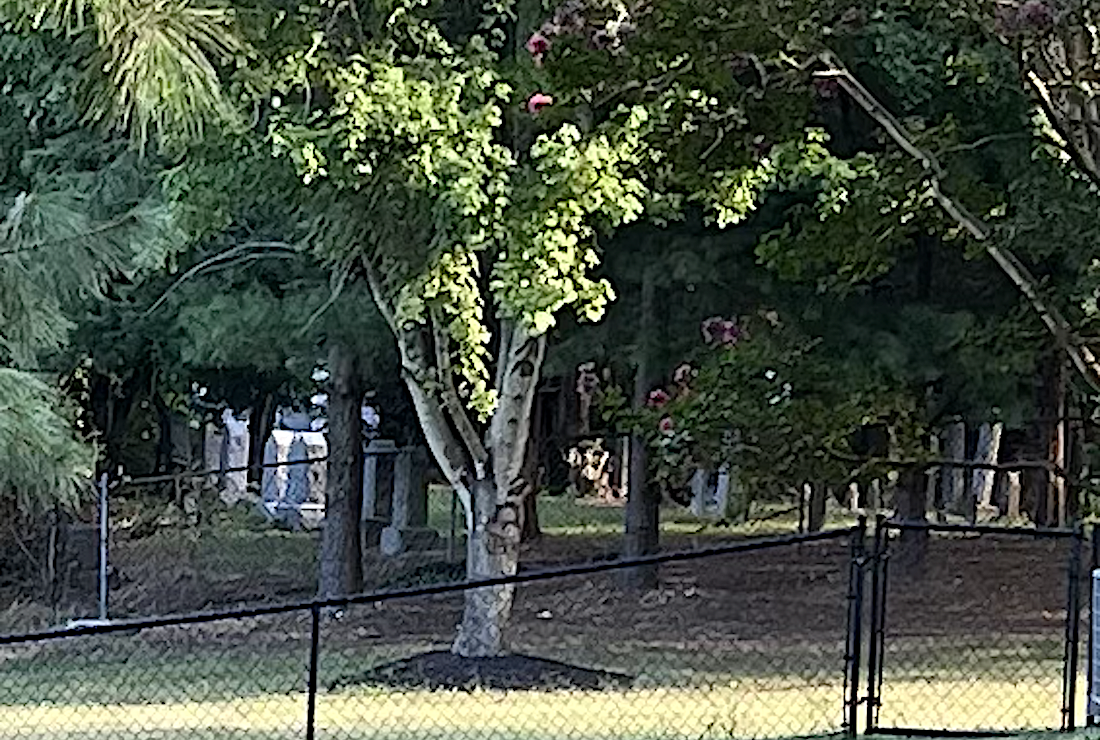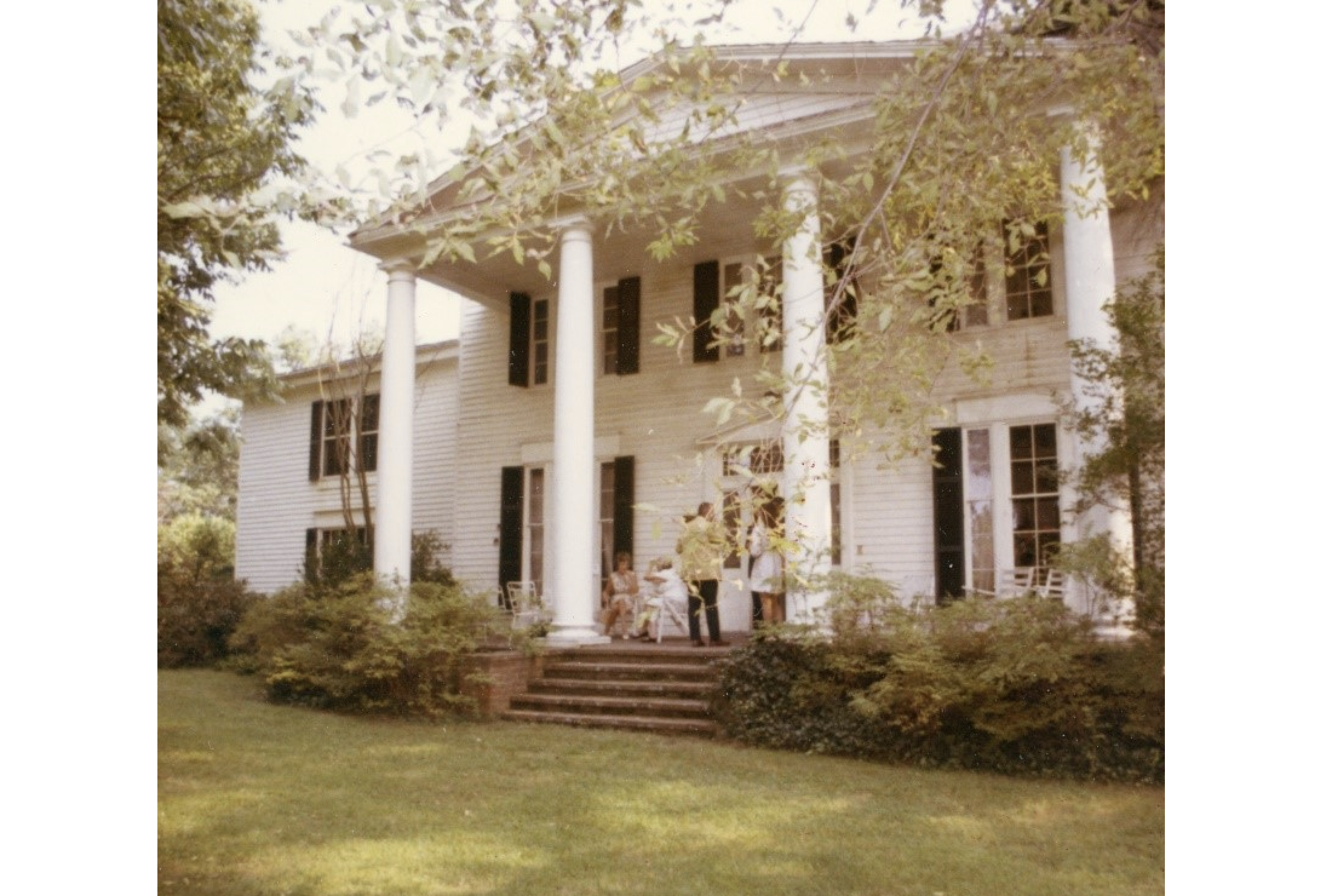In 1649, King Charles II granted six million acres in Virginia to seven loyal associates who endured exile with him. Among these exiles was John First Lord Culpeper, whose son Thomas Second Lord Culpeper inherited his share. By 1688, he owned most of the land grant known as the Northern Neck Proprietary. On his death in 1689, his daughter, Katherine inherited five-sixths of his property. Katherine married Thomas Fifth Lord Fairfax in 1690. Their son, Thomas Sixth Lord Fairfax, inherited the 5,282,000 acre property from his mother in 1710.
Dennis McCarty was issued a patent for the 522-acre tract known as Mount Air, north of Accotinck Creek in 1727. The McCartys were a prominent family in Virginia who were active in public life. Dennis served as Sheriff, Justice of the Peace, vestryman from Truro Parish, and was a member of the House of Burgesses representing Prince William County. He married George Washington's cousin, Sarah Ball in 1724.
A house was built on the McCarty property by at least 1732, as is evidenced in a bill of lading requesting lilacs and other plantings for his garden. Also in 1732, an Act of Assembly authorized construction of a public warehouse on Dennis McCarty's land. In 1742, Dennis McCarty died. Sarah Ball McCarty remarried and moved to Cedar Grove. Dennis and Sarah's son, Daniel and his wife Sinah Ball McCarty moved into Mount Air and lived on the property until 1792, when Daniel died. Daniel and Sinah's only son, Daniel, lived at Cedar Grove, so Mount Air was bequeathed to their grandson, Daniel the younger. Daniel and his wife did not settle at Mount Air, rather, they put it up for sale in 1810. Before they could sell it, Daniel died in 1811. Daniel's aunt, Sarah McCarty Chichester, purchased the dower interest in Mount Air, returning ownership of the property to descendants of Dennis McCarty, where it would remain until 1860.
In 1860, Aristides Landstreet, his wife Mary, and his family moved into Mount Air. When the Civil War started, Aristides enlisted with the Confederate army and was posted in Richmond. For a time his family remained at Mount Air, near the shifting lines of Confederate and Union troops. Finally, the estate was occupied by Union troops, and the family relocated for the duration of the war. Both the house and the lands had suffered greatly as a result of the war. The value of the property declined over the years and after Aristides died in 1810, his daughters were forced first to mortgage the property and subsequently to sell it in 1914.
In 1914, George (sic) Shirley Kernan returned to Virginia and purchased the Mount Air property. For several months in 1918, Mrs. Kernan made the grounds available as quarters for the Anny Engineers, who were constructing a railroad link to Camp Humphreys (now Fort Belvoir). Abandoned lumber from this encampment were used to panel one of the rooms in the main house and to construct a garage that was later converted into a tenant house. Mrs. Kernan also constructed a brick terrace overlooking the rolling meadows and woods west of the house. She decorated this terrace with Corinthian capitals that she rescued from the old Botanical Gardens in Washington as it was being dismantled. Mrs. Kernan died in 1962, leaving the estate to her daughter. Although Elisabeth traveled extensively in her work for the Children's Bureau and as a journalist, her home remained at Mount Air. Sometime in the late 1960s, Elisabeth began exploring means of preserving Mount Air. In 1969 the main house was registered with the Fairfax County Inventory of Historic Sites. Elisabeth resided at Mount Air until 1992. In May of 1992, several weeks after Elisabeth's death, the main house at Mount Air was completely consumed by fire.
The property known as Mount Air was acquired by Dennis McCarty in 1727 and consisted of 522 acres on the north side of Accotink Creek, adjacent to lands bequeathed to him by his father. The McCarty's were a family of property and position in eighteenth-century Virginia. Dennis McCarty was made a sheriff of Stafford County (now Fairfax) in 1728, Justice of the Peace in 1728, and by 1731 was representing the newly-formed Prince William County in the House of Burgesses. From 1732 until the close of his life he was a vestryman for Truro Parish. McCarty's wife, Sarah Ball, was a second cousin to George Washington. One of the McCarty daughters, Ann, married William Ramsay, a trustee of the new town of Alexandria. Another daughter, Sarah, married George Johnston, a figure of major importance in pre-Revolutionary Fairfax County.
It is not known exactly when the McCarty family took'up residence on the property. The earliest evidence of occupation is a bill of lading for lilac, hawthorne and gooseberry bushes sent from England in 1732. The magnificent lilac allee at Mount Air may well date from this order.
Patterns which are characteristic throughout the long history of Mount Air emerged early. The relationship of the owners to the Balls, Randolphs, Masons, and Washingtons is a recurring theme. So is the pattern of matriarchy. Dennis McCarty died eighteen years after acquiring the land, leaving his widow to carry on. Sarah Ball was the first of many widows at Mount Air, strong women who coped with wayward sons, Civil War and military occupation during both wartime and peacetime. Only three families have owned Mount Air. Dennis McCarty's great-grandson Daniel died without children. His aunt, Sarah McCarty Chichester, purchased the widow's dower rights in order to keep the property in the family. In 1860 the Chichesters sold Mount Air to Aristides Landstreet. In 1914 his daughters sold the now much-reduced acreage to George (sic) Kernan, the widowed mother of the present owner.
Sarah McCarty Chichester survived her husband Richard by thirty years. Edith Spouse, author of Mount Air, speculates that Sarah probably breathed a sigh of relief on entering widowhood. When Richard Chichester died at Mount Air his slaves said that the devil ran out from under his bed in the form of a red rabbit. Indeed his treatment of his slaves had earned him the nickname "Hard" Chichester. A bizarre footnote to this story resulted from a storm in the 1920s which damaged the graveyard where Richard lay buried. A portion of his tombstone was sheared away. Where once the inscription read "Sacred to the Memory of Richard Chichester," the remainder shows only 'hard Chichester'. But Sarah had more troubles with her son, Pitt, than with her husband. Indeed her grandchildren reported that she was virtually a prisoner at Mount Air, and they came to her rescue, removing her to the home of her grandson, Thompson F. Mason. Pitt himself died in 1833, leaving Fanny, his widow, to live on for another thirty years, another of the matriarchs at Mount Air. During that time the house was seriously damaged by fire, and in 1859 it was rebuilt. Shortly after the repairs were made, however, Fanny Chichester sold Mount Air to pay for the gambling debts of a granddaughter's husband.
The new owners, the Landstreet Family, occupied Mount Air from 1860 to 1914. Aristides Landstreet, his wife Mary, and their seven children moved to Mount Air shortly before the Civil War began. At forty years of age "Tide" Landstreet enlisted as a private in the Virginia cavalry. Two of his sons also joined the army. Union troops occupied the plantation and Mrs. Landstreet was once imprisoned for three months on a charge of giving aid to the nearby Confederates. On her return home she was still able to signal the nearby Confederates from the attic window. Later in the war Mrs. Landstreet and the children left Mount Air for the safety of the Blue Ridge mountains, and on their return they found the property in need of much work. Portions of the estate were sold or divided for the children, and when two of the Landstreet daughters sold the property in 1914 there were only 117 acres left.
The new owner George (sic) Kernan, had by this time been twice widowed. On her father's side she was the descendant of one of Napoleon's generals. On the side of her mother, Caroline Shirley, she was related to the Randolphs, Balls, and Washingtons. Her first husband, John Shirley, was killed in an accident in Oklahoma Indian territory only two weeks before their child (the present owner) was born. She married again, but the death of her second husband left her with two small children, and she returned to Europe where she wrote for the Paris edition of the New York Herald.
At the beginning of World War I Mrs. Kernan and her two children returned to Virginia where she purchased Mount Air. When the United States entered the war the effects were felt at the Kernan farm. Mrs. Kernan granted the use of much of the land to the Army Engineers who arrived to build a new post to be called Humphreys (now Fort Belvoir). In her honor, the troops who camped on Kernan land referred to it as "Camp Merry Widow." Another of the remarkable women of Mount Air, Mrs. Kernan lived to be 96. Her acquaintances ranged from the Empress Eugénie of France to the outlaw Jesse James. For her work on their behalf in Florida she was made a member of the Carpenters Union.
In an almost uncanny continuance of the Mount Air tradition, its present owner, Elisabeth Shirley Enochs, was widowed after only two years of marriage. She has been a correspondent for the New York Times, worked for the Children's Bureau of the United States Department of Labor, and represented the United States on the Inter-American Children's Institute.
The Mount Air house itself reflects the many occupants who have lived in it and whose needs have resulted in repairs, alterations, and additions. It is known that Dennis McCarty had a house on the tract, but its eventual fate is uncertain. No above-ground trace of the house remains today, however an inscription on a board under the eaves of the main house, discovered during the twentieth-century repairs, states that "this edifice was commenced on Oct. 6, ____ . . . McCartys." An advertisement to rent Mount Air appearing in the Alexandria Gazette on December 17, 1806, mentioned "a large and convenient" house; on February 26, 1810, it was referred to as "a large and commodious dwelling," and the advertisement on October 22, 1811, described it as "one well calculated for the accommodations of a genteel family."
The present structure consists of two sections, one two-story, and a larger three-story main section.
There is some architectural evidence that the basement foundation under the main portion of the house may be the foundation of an earlier house built before 1760. This would substantiate the inscription. There is known to have been a significant fire in 1859, after which repairs were made. In addition, occupation by Union troops during the Civil War necessitated more repairs during the 1870s, and other alterations were made during the twentieth century. It is thus difficult to decipher the exact architectural history of the present structure.
The house is Greek Revival in style, with its most significant visual element being the two-story, four-columned portico topped by a pediment. The main door is flanked by a transom and sidelights, and topped by a pediment tracing the lines of the portico pediment. This door, as well as the windows in the main section of the house, are said to have been brought from Louisiana about 1840. T. Tripp Russell, an architect who has made a study of southern buildings, confirms this story. On examination of the windows and framing at Mount Air, he found them typical of French Louisiana. Because of the thinness of the muntins which frame the glass panels they are quite fragile and not often used in other sections of the country.
The gardens of the Mount Air property are impressive. On the north front of the building are three ancient trees. Two are ash trees, one 14 feet 11 inches and the other, inaccessible to measurement, even larger. The third is an osage orange, over eleven feet in diameter, a rarity in this area. The other outstanding feature is the L-shaped allee of lilac bushes on the east side of the house. These are believed to be the bushes referred to in the 1732 bill of lading. The allee partially encloses a series of boxwood-bordered gardens. These include lilac and peony gardens. At the garden's edge is a hundred-foot-long boxwood allee. According to Mrs. Sprouse's research, more than a third of the plant material used in Colonial Williamsburg is also growing at Mount Air.
Together, the house and gardens tell the story of two-and-a-half centuries of a Fairfax County property whose occupants put their mark on the county, and, most emphatically, on the land they owned.
When George Kernan rebuilt the gun room fireplace she inscribed in the wet ce ment the following lines from Longfellow's poem "Haunted House" which evoke the centuries of McCartys, Chichesters and Landstreets whose home this was.
All houses wherein men have lived and died
Are haunted houses. Through the open doors
The harmless phantoms on their errands glide
With feet that make no sound upon the floors.
We hold no title deed to house or lands;
Owners and occupants of earlier dates
From graves forgotten stretch their dusty hands
An hold in mortmain still their old estates.



